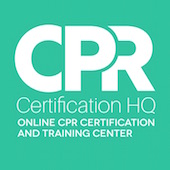A popular argument in the resuscitation world is the adage that compression-only CPR saves more lives. While not all emergency providers may agree with this statement, the case for compression-only Cardio pulmonary resuscitation is quite strong. So, What is Compression-Only CPR? Rick Caissie, National Director, First Aid, Swimming & Water Safety explains, “Compression-only CPR is giving continuous chest compressions of approximately 100 compressions per minute, without giving rescue breaths,” What Kind of Situations would this Technique Apply Best to ? In most situations, the victim is surrounded by untrained or unwilling people around him. Administering CPR can be a huge task for those who are untrained in it. It isn't just about going out there to help someone, it is about having the courage to perform what’s required in the most practical manner possible. For an untrained person, giving rescue breaths may not just be a daunting task, there is also a certain amount of wariness involved when you have to give mouth-to-mouth to a stranger. In light of this, a compression-only CPR may be the best option yet for such situations. How does the Compression-Only Method of CPR Work? The compression-only method involves 3 major steps:
The purpose of performing these compressions in case of a cardiac arrest on an adult patient is to keep blood flowing to the heart and the brain and other major organs, in order to prevent multiple organ failure. Compressing the chest at a steady rate and a depth of 2-5 cms helps follow the pumping motion required for this function. The compression-only method must not be followed if the victim is suspected of choking or drowning. Why is Compression-Only Cardio Pulmonary Resuscitation Effective? In case of cardiac arrest victims, especially in situations occurring outside of hospitals, it can be difficult for an untrained rescuer to remember or learn and execute all the steps of the traditional CPR method even if he/she has access to it. The compression-only method is easy to remember and consists of simple steps which anyone, absolutely anyone can follow without the stigmas or fears associated with mouth-to-mouth resuscitation. Another reason why compression-only CPR is so popular is because, one doesn't need to stop compressions to perform rescue breaths, thereby pausing blood flow. There might be a lot of debate surrounding the correct form of CPR to be followed in victims. While drowning victims might still need rescue breaths, a majority of cardiac arrest victims (adults) have shown a better survival rate in most cases as reported by hospitals. What method of CPR would you prefer if you had to rescue someone?

More articles by the writer
A popular argument in the resuscitation world is the adage that compression-only CPR saves more lives. While not all emergency providers may agree with this statement, the case for compression-only Cardio pulmonary resuscitation is quite strong. So, What is Compression-Only CPR? Rick Caissie, National Director, First Aid, Swimming & Water Safety explains, “Compression-only CPR is giving continuous chest compressions of approximately 100 compressions per minute, without giving rescue breaths,” What Kind of Situations would this Technique Apply Best to ? In most situations, the victim is surrounded by untrained or unwilling people around him. Administering CPR can be a huge task for those who are untrained in it. It isn't just about going out there to help someone, it is about having the courage to perform what’s required in the most practical manner possible. For an untrained person, giving rescue breaths may not just be a daunting task, there is also a certain amount of wariness involved when you have to give mouth-to-mouth to a stranger. In light of this, a compression-only CPR may be the best option yet for such situations. How does the Compression-Only Method of CPR Work? The compression-only method involves 3 major steps:
The purpose of performing these compressions in case of a cardiac arrest on an adult patient is to keep blood flowing to the heart and the brain and other major organs, in order to prevent multiple organ failure. Compressing the chest at a steady rate and a depth of 2-5 cms helps follow the pumping motion required for this function. The compression-only method must not be followed if the victim is suspected of choking or drowning. Why is Compression-Only Cardio Pulmonary Resuscitation Effective? In case of cardiac arrest victims, especially in situations occurring outside of hospitals, it can be difficult for an untrained rescuer to remember or learn and execute all the steps of the traditional CPR method even if he/she has access to it. The compression-only method is easy to remember and consists of simple steps which anyone, absolutely anyone can follow without the stigmas or fears associated with mouth-to-mouth resuscitation. Another reason why compression-only CPR is so popular is because, one doesn't need to stop compressions to perform rescue breaths, thereby pausing blood flow. There might be a lot of debate surrounding the correct form of CPR to be followed in victims. While drowning victims might still need rescue breaths, a majority of cardiac arrest victims (adults) have shown a better survival rate in most cases as reported by hospitals. What method of CPR would you prefer if you had to rescue someone?
Vlad Magdalin